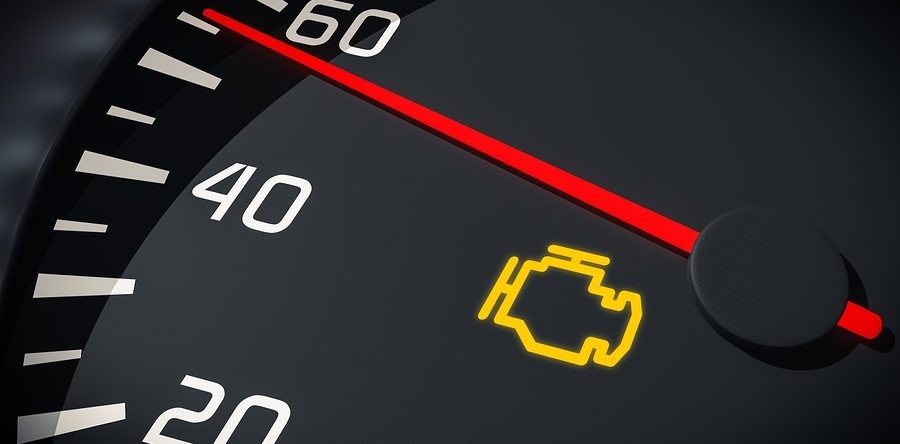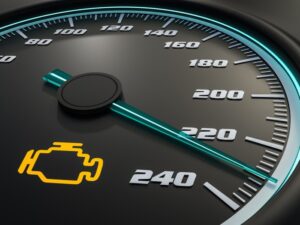
The check engine light is a vital indicator in modern vehicles that alerts drivers to potential issues with their vehicle’s systems. When the check engine light illuminates in your Honda, it is important not to ignore it. In this article, we will explore the common causes behind a check engine light in Honda vehicles, provide troubleshooting tips, and offer solutions to resolve the issue. So, let’s dive in and understand what could be triggering that pesky check engine light in your Honda.
1. Understanding the Check Engine Light
The check engine light, often represented by an engine-shaped icon on your vehicle’s dashboard, is part of the On-Board Diagnostics (OBD) system. It is designed to monitor various components and systems of your Honda, ensuring they function within the specified parameters. When the check engine light illuminates, it indicates that the OBD system has detected a potential issue that requires attention.
2. Common Causes of Check Engine Light in Honda
2.1 Faulty Oxygen Sensor
A faulty oxygen sensor is a common trigger for the check engine light. The oxygen sensor measures the oxygen levels in the exhaust gases and provides feedback to the engine control unit. A malfunctioning sensor can lead to poor fuel economy and increased emissions.
2.2 Loose or Damaged Gas Cap
A loose or damaged gas cap may cause the check engine light to illuminate. The gas cap plays a crucial role in maintaining the integrity of the fuel system by preventing fuel vapor from escaping. A loose or damaged cap can lead to fuel evaporation and trigger the check engine light.
2.3 Catalytic Converter Issues
Problems with the catalytic converter can trigger the check engine light. The catalytic converter helps reduce harmful emissions by converting them into less harmful substances. A damaged or inefficient catalytic converter can result in increased emissions and a lit check engine light.
2.4 Mass Airflow Sensor Problems
The mass airflow sensor measures the amount of air entering the engine and helps determine the appropriate fuel-to-air ratio. If the sensor becomes dirty or malfunctions, it can affect the engine’s performance and trigger the check engine light.
2.5 Malfunctioning Spark Plugs
Worn-out or malfunctioning spark plugs can cause misfires in the engine, leading to the check engine light coming on. Spark plugs play a crucial role in igniting the air-fuel mixture in the engine cylinders, and if they are not functioning properly, it can result in reduced engine performance.
2.6 Issues with the Ignition Coil
The ignition coil generates the high voltage needed to ignite the air-fuel mixture in the engine. If the ignition coil malfunctions or fails, it can lead to misfires and trigger the check engine light.
2.7 Emission Control System Malfunction
Various components of the emission control system, such as the evaporative emission control system or the exhaust gas recirculation system, can develop issues and cause the check engine light to illuminate. These systems are designed to minimize harmful emissions from the vehicle.
2.8 Faulty Engine Control Module (ECM)
The Engine Control Module (ECM), also known as the engine control unit, is responsible for controlling various engine functions. If the ECM malfunctions or receives incorrect data from sensors, it can lead to the check engine light turning on.
2.9 Problems with the Exhaust Gas Recirculation (EGR) Valve
The Exhaust Gas Recirculation (EGR) valve helps reduce nitrogen oxide emissions by recirculating a portion of the exhaust gases back into the engine. If the EGR valve becomes clogged or malfunctions, it can trigger the check engine light.
2.10 Sensor or Wiring Issues
Faulty sensors or damaged wiring can also cause the check engine light to illuminate. The sensors and wiring throughout the vehicle play a crucial role in providing data to the ECM. If any of these components develop issues, it can result in the check engine light coming on.
3. Troubleshooting the Check Engine Light
When the check engine light illuminates in your Honda, you can perform some basic troubleshooting steps to identify the potential issue. Here are a few steps you can take:
3.1 Check the Gas Cap
Start by inspecting the gas cap. Ensure it is tightened properly and in good condition. If it appears loose or damaged, consider replacing it.
3.2 Inspect the Oxygen Sensor
If the gas cap is not the issue, you can check the oxygen sensor. However, diagnosing and replacing an oxygen sensor requires specialized tools and knowledge. It is recommended to consult a professional technician for this task.
3.3 Examine the Catalytic Converter
Inspect the catalytic converter for any visible damage or signs of malfunction. Any issues with the catalytic converter should be addressed promptly by a qualified mechanic.
3.4 Test the Spark Plugs and Ignition Coil
If you suspect a problem with the spark plugs or ignition coil, you can have them tested. A mechanic can determine if they need to be replaced or if there are any other underlying issues.
3.5 Scan the ECM for Error Codes
Using an OBD-II scanner, you can retrieve error codes stored in the ECM. These codes provide valuable information about the specific issue triggering the check engine light. Again, it is advisable to seek professional help to interpret the codes accurately.
4. Solutions to Reset or Turn Off the Check Engine Light
Once you have identified and addressed the underlying issue causing the check engine light, you may need to reset or turn off the light. Here are a few methods you can try:
4.1 Address the Specific Issue
By fixing the problem that triggered the check engine light, the light may automatically turn off. Ensure that the repairs have been done correctly before proceeding.
4.2 Use an OBD-II Scanner
An OBD-II scanner can be used to clear the error codes and turn off the check engine light. However, it is crucial to note that clearing the codes without addressing the underlying issue may result in the light returning.
4.3 Disconnect the Battery
Disconnecting the vehicle’s battery for a few minutes can sometimes reset the ECM and turn off the check engine light. However, this method may also reset other settings in the vehicle, such as radio presets.
4.4 Seek Professional Assistance
If the check engine light persists even after troubleshooting and attempting to reset it, it is advisable to consult a professional mechanic. They have the expertise and tools to diagnose and resolve complex issues accurately.
5. Conclusion
The check engine light in your Honda should never be ignored. It serves as an important warning sign for potential issues with your vehicle. By understanding the common causes, troubleshooting steps, and solutions mentioned in this article, you can address check engine light problems in your Honda promptly and effectively.
Frequently Asked Questions (FAQs)
Q1: How serious is a check engine light in a Honda?
A1: The seriousness of a check engine light in a Honda depends on the underlying issue. While some problems may be minor, others can indicate significant issues that require immediate attention.
Q2: Can I ignore the check engine light?
A2: It is not advisable to ignore the check engine light. Even if the vehicle seems to be running fine, the light indicates an issue that should be addressed to prevent potential damage or further complications.
Q3: Can a loose gas cap trigger the check engine light?
A3: Yes, a loose or damaged gas cap can cause the check engine light to illuminate. Ensuring the gas cap is tightened properly is a simple step that can resolve the issue in some cases.
Q4: Do I need a professional mechanic to reset the check engine light?
A4: While there are methods to reset the check engine light yourself, it is recommended to consult a professional mechanic to diagnose and resolve the underlying issue before attempting a reset.
Q5: How often should I check my Honda for error codes if the check engine light is not on?
A5: It is recommended to periodically scan your Honda for error codes, even if the check engine light is not illuminated. This proactive approach can help identify potential issues before they escalate.
In this article, we have explored the causes, troubleshooting steps, and solutions for the check engine light in Honda vehicles. By following the outlined guidelines and seeking professional assistance when necessary, you can effectively address and resolve check engine light issues, ensuring the optimal performance and longevity of your Honda.






